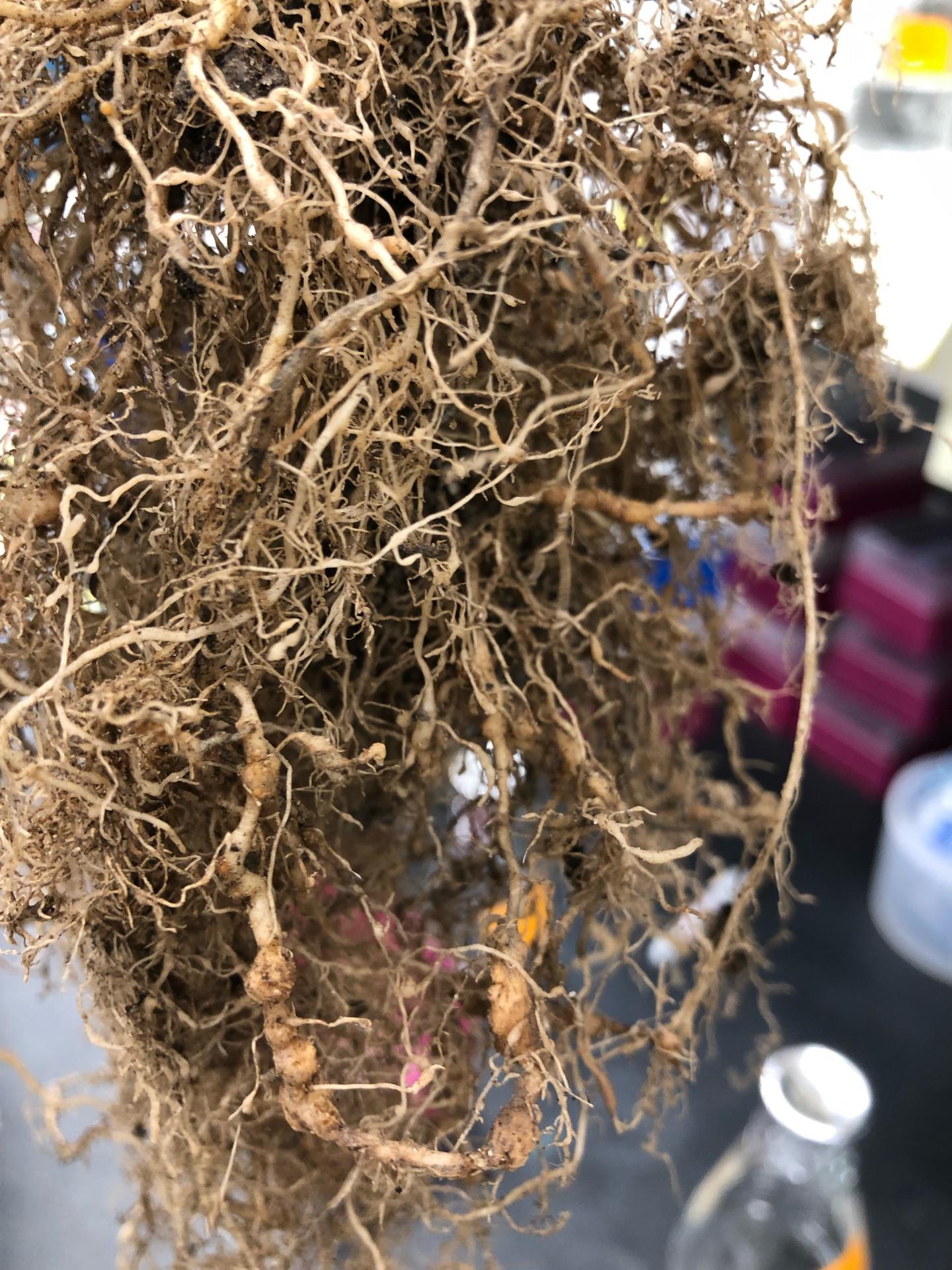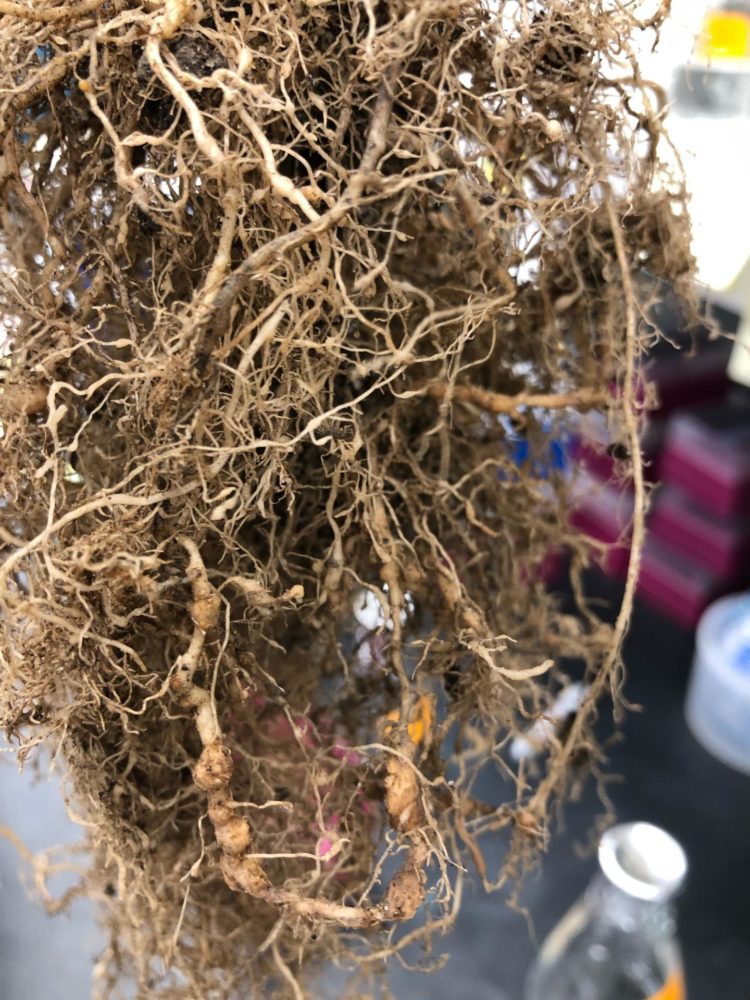Researchers from Boyce Thompson Institute have found that plants manipulate nematode pheromones to repel these pests, which cause more than $100 million in damage to crops every year

Credit: BTI/Murli Manohar
ITHACA, NY, January 10, 2020]] — Nematodes are tiny, ubiquitous roundworms that infect plant roots, causing more than $100 billion in crop damage worldwide each year. New research has found that plants manipulate the worms’ pheromones to repel infestations, providing insights into how farmers could fight these pests.
Led by Boyce Thompson Institute faculty member Frank Schroeder, the group studied a group of chemicals called ascarosides, which the worms produce and secrete to communicate with each other. As described in a paper published in Nature Communications on January 10, the researchers have shown that plants also “talk” to nematodes by metabolizing ascarosides and secreting the metabolites back into the soil.
“It’s not only that the plant can ‘sense’ or ‘smell’ a nematode,” Schroeder said. “It’s that the plant learns a foreign language, and then broadcasts something in that language to spread propaganda that ‘this is a bad place’. Plants mess with nematodes’ communications system to drive them away.”
The study built on the team’s previous work showing that plants react to ascr#18 – the predominant ascaroside secreted by plant-infecting nematodes – by bolstering their own immune defenses, thereby protecting them against many types of pests and pathogens.
In those earlier studies, “We also saw that when ascr#18 was given to plants, the chemical disappears over time,” according to lead author Murli Manohar, a senior research associate at BTI.
That observation, along with published literature suggesting plants could modify pest metabolites, led the team to hypothesize that “plants and nematodes interact via small molecule signaling and alter one another’s messages,” Schroeder said.
To probe that idea, the team treated three plant species – Arabidopsis, wheat and tomato – with ascr#18 and compared compounds found in treated and untreated plants. They identified three ascr#18 metabolites, the most abundant of which was ascr#9.
The researchers also found Arabidopsis and tomato roots secreted the three metabolites into the soil, and that a mixture of 90% ascr#9 and 10% ascr#18 added to the soil steered nematodes away from the plant’s roots, thereby reducing infection.
The team hypothesized that nematodes in the soil perceive the mixture as a signal, sent by plants already infected with nematodes, to “go away” and prevent overpopulation of a single plant. Worms may have evolved to hijack plant metabolism to send this signal. Plants, in turn, may have evolved to tamper with the signal to appear as heavily infected as possible, thereby fooling would-be invaders.
“This is a dimension of their relationship that no one has seen before,” said Manohar. “And plants may have similar types of chemical communication with other pests.”
Although the mixture of ascr#9 and ascr#18 could serve as a crop protectant, Schroeder said there should be no detriment to using straight ascr#18 on crops, as described in the team’s earlier research.
“Ascr#18 mainly primes the plant to respond more quickly and strongly to a pathogen, rather than fully inducing the defensive response itself,” he said. “So there should be no cost to the plant in terms of reduced growth, yield or other problems.”
The team also showed that plants metabolize ascr#18 via the peroxisomal β-oxidation pathway, a system conserved across many plant species.
“This paper uncovers an ancient interaction,” Schroeder said. “All nematodes make ascarosides, and plants have had millions of years to learn how to manipulate these molecules.”
He added: “Plants aren’t passive green things. They are active participants in an interactive dialog with the surrounding environment, and we will continue to decipher this dialog.”
###
These discoveries are being commercialized by a BTI and Cornell University-based startup company, Ascribe Bioscience, as a family of crop protection products named PhytalixTM.
Schroeder is also professor in Cornell University’s Department of Chemistry and Chemical Biology. Daniel Klessig, a BTI faculty member and adjunct professor in Cornell’s Department of Plant Pathology, is also a co-author on the paper.
Other co-authors include researchers from Cornell University, the USDA’s Robert W. Holley Center for Agriculture and Health, and the University of California, Davis.
CITATION: Manohar, M., Tenjo-Castano, F., Chen, S., Zhang, Y.K., Kumari, A., Williamson, V.M., Wang, X., Klessig, D.F. and Schroeder, F.C., 2020. Plant metabolism of nematode pheromones mediates plant-nematode interactions. Nature Communications, DOI: 10.1038/s41467-019-14104-2
This work is supported jointly by Agriculture and Food Research Initiative Competitive grant no. 2017-67013-26535 from the USDA National Institute of Food and Agriculture; the USDA Agricultural Research Service; and the National Center for Complementary and Alternative Medicine of the National Institutes of Health, under award number R01AT008764.
About Boyce Thompson Institute:
Boyce Thompson Institute is a premier life sciences research institution located in Ithaca, New York. BTI scientists conduct investigations into fundamental plant and life sciences research with the goals of increasing food security, improving environmental sustainability in agriculture, and making basic discoveries that will enhance human health. Throughout this work, BTI is committed to inspiring and educating students and to providing advanced training for the next generation of scientists. BTI is an independent nonprofit research institute that is also affiliated with Cornell University. For more information, please visit BTIscience.org.
Media Relations Contacts: AJ Bouchie (607-288-2578, [email protected]) or Stephanie Meyer ([email protected]).
Communications Office
Boyce Thompson Institute
533 Tower Road
Ithaca, New York 14853 USA
To learn more about Boyce Thompson Institute (BTI) research, please visit the BTI website at BTIscience.org.
Connect online with BTI through Twitter, Facebook, Instagram and LinkedIn.
Media Contact
AJ Bouchie
[email protected]
607-288-2578
Original Source
https:/
Related Journal Article
http://dx.





